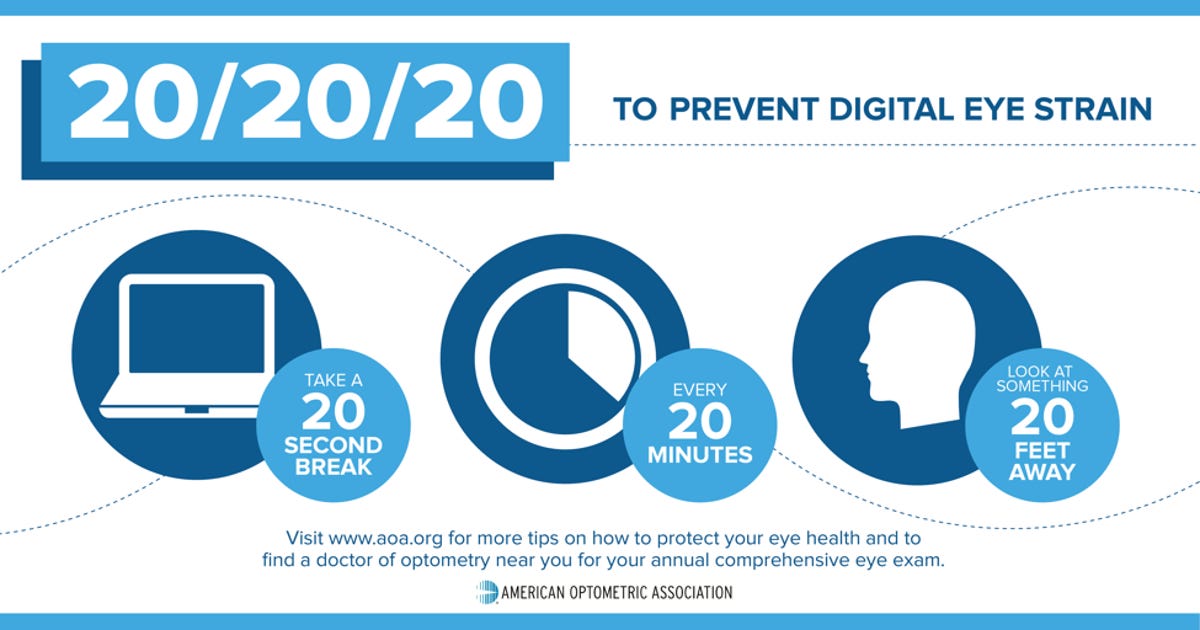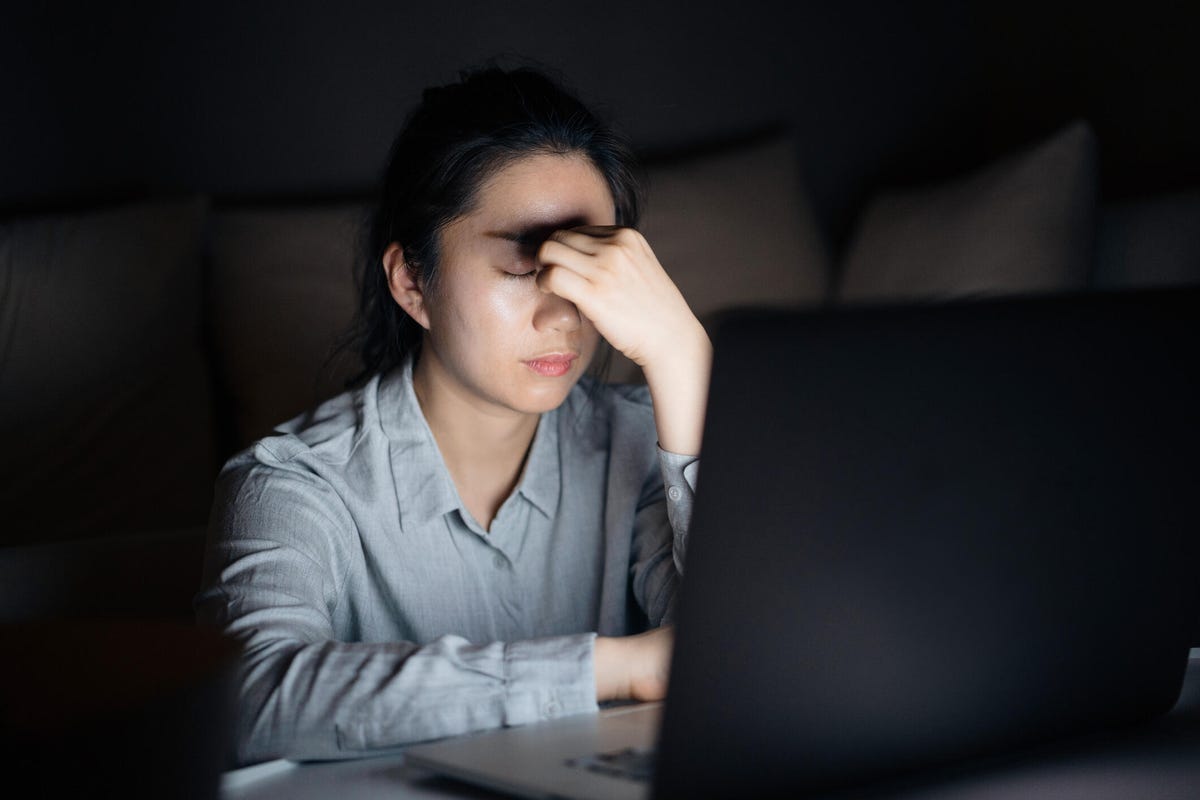If you’re a veteran desk job worker, you’re probably all too familiar with the way your eyeballs feel after a long day. If you’re new to the computer work lifestyle, you’re probably thinking (if not screaming), “What is going on with my eyes?!”
Welcome to Club Eye Strain (it’s not a fun club). Eye strain can induce all sorts of unpleasant feelings, such as burning, itching, dry eyes, watery eyes, headaches, blurry vision, double vision, tiredness and difficulty focusing.
You’re not doomed to living with eye strain, no matter how long you stare at a screen. You can reduce your chances of developing eye strain with simple changes to your habits. Here’s what you need to know.
Read more: Best Prescription Glasses
What is eye strain?

Most people have experienced eye strain and know what it feels like: Your eyes feel sore and irritated, or you may even have blurred vision by the end of the day. Eye strain is an incredibly common occurrence that often stems from staring at computer screens or focusing on something for long periods. Poor lighting and untreated vision issues can also cause eye strain.
Common symptoms of eye strain include:
- Headaches
- Sensitivity to light
- Blurred vision
- Muscle spasms of your eyelids
- Itchy or irritated eyes
- Sore neck and shoulders
There isn’t much research around the long-term effects of eye strain, since it disappears on its own. Generally, it’s just considered a nuisance. It’s still worth making small adjustments that can help get rid of eye strain. There’s a simple optometrist-endorsed tip to keep your eyes fresh. It’s called the 20-20-20 rule, which the American Academy of Ophthalmology and the American Optometric Association endorse as a way to prevent screen-related eye strain.
Read more: Do Blue-Light-Blocking Glasses Actually Work?
What is the 20-20-20 rule for eye strain?
The 20-20-20 rule is simple. Every 20 minutes, take a 20-second break from looking at your screen and look at something 20 feet away. This effective tactic will help reduce eye strain. It also helps you blink, which lubricates the eyes.
OK, while the concept is simple, it’s really easy to forget to actually do it, especially when you’re in the middle of something. Setting a timer on your phone for every 20 minutes or using an app can help, but in an eight-hour workday, that comes out to 24 eyeball breaks. That’s a lot, and if you have trouble getting into deep focus mode, looking away every 20 minutes can impede your workflow.
Here are some ways to integrate the 20-20-20 rule into your daily routine:
- Set an alarm for every 20 minutes to remind yourself to take a break from your screen.
- Practice the 20-20-20 rule for half of the day. Pick morning or afternoon and commit to taking all of your breaks. You can slowly add more breaks as you get better at reestablishing your focus.

What should you look at?
Chances are, you probably can’t accurately measure a 20-foot distance without a measurement tool. It’s pretty easy to estimate: If you’re a 6-foot person, look at something that seems to be three of your body lengths away. If you’re a 5-foot person, look at something about four body lengths away.
Alternatively, you can just look out of your window or at something in the distance. Focusing on a tree or something else outdoors is a good way to give your eyes a break.
The timing is more important than the distance because the key is to give your eyes a chance to fully relax, multiple times per day.
Other things you can do to relieve eye strain

Staring at your screen for too long can do a number on your eyes.
Sometimes, the 20-20-20 rule isn’t enough to keep your eyes from burning, itching or tiring out. Thankfully, there are other tips you can use as well to relieve and reduce eye strain.
- Reduce glare on your computer screen by adjusting your settings or using a matte filter (lots of computers come with matte screens, these days, too).
- Reduce the contrast and brightness on your computer screen.
- Position your computer screen so that it’s 24 to 26 inches away from your face, and so that your eyes point down slightly, rather than up or straight.
- Permanently enable night mode on your device so it emits gentler, yellower light.
When you should go to the eye doctor?
One of the largest contributors to regular instances of eye strain is undiagnosed vision troubles. When we can’t see clearly, our eyes naturally squint to bring things into focus — we can’t help it. Squinting at a computer screen all the time puts extra pressure on your eyes, which leaves you with unpleasant feelings of eye strain.
Don’t forget to schedule your yearly eye exam to check up on the health of your eyes and address prescription glasses needs. Sometimes, getting rid of eye strain is as easy as going to the eye doctor.




















+ There are no comments
Add yours